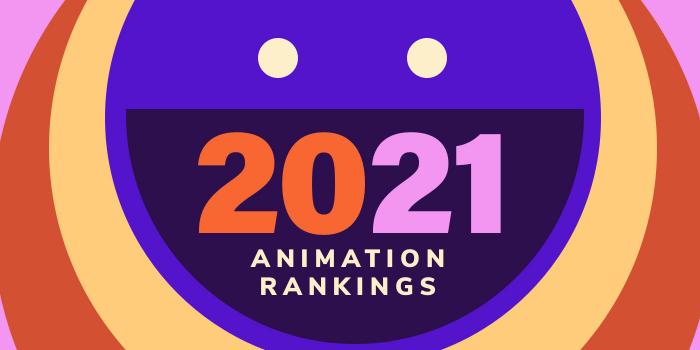
Become a 3D animator for film and games! Get specialized training to fast-track your career with CG Spectrum’s online 3D animation courses. Learn directly from expert animators working on hit films and best-selling games. Find out more.

| Ranking | School | City |
|---|---|---|
| 1 | Virginia Polytechnic Institute and State University | Blacksburg |
| 2 | Virginia Commonwealth University | Richmond |
Our 2021 ranking -our tenth annual- of the top animation school programs in Virginia. For an explanation of the ranking criteria, click here.

Virginia Polytechnic Institute and State University (Virginia Tech) officially opened on October 1, 1872 under the name Virginia Agricultural and Mechanical College. Today, with a 2,600-acre main campus, educational and research facilities across the state, a study-abroad site in Switzerland, and a 1,800-acre agriculture research farm near the main campus, the school serves more than 36,000 students enrolled in 280 undergraduate, graduate, and doctoral majors nine colleges and a graduate school.
The College of Architecture and Urban Studies houses the School of Visual Arts (SOVA), which offers BFA and MFA degrees in Creative Technologies (CT).
Students in this 120 credit hour CT BFA program will take courses in areas such as 3D Animation and Modeling, Digital Painting, Digital Video, and Visual Effects, and Digital Painting. Course highlights include 3D Computer Animation, Computer Animation Studio, Digital Photography, Drawing, and New Media Art. Students may also choose a Plan of Study from the following: Immersive Virtual Environments, Code and Form, and Moving Image. All Plans offer animation coursework.
Immersive Virtual Environments students will take Topics in Computer Animation (Character Modeling), Topics in Computer Animation (Character Animation), Topics in Computer Animation (Video Game Design), and one other 3500 or 3600-level art course.
Code and Form consists of Topics in Computer Animation (Processing), Topics in Digital Art + Design (Multimedia Studio Max/MSP), Intermediate Sculpture, and one other 3500- or 3600-level art course.
Moving Image consists of Topics in New Media Art (Digital Video), Topics in New Media Art (2D Motion Graphics), Topics in New Media Art (Digital Illustration), and one other 3500, 3600 or 3700-level art course.
The MFA in Creative Technologies is a terminal degree program that “prepares students to use digital and new media technology to create, present, communicate, and shape information and imagery,” says the school. The program, which “focuses on creative practice at the intersections of digital technology and artistic exploration,” allows MFA students to design a specific program of study that fits their individual interests.
Students in this 60 credit hour program will have the opportunity to develop original work in 3D animation, creative coding, digital imaging, installation, motion graphics, interactive multi-media design, simulation, sound and imaging, spatial interactivity, video art, virtual environments, web design, and more. SOVA also “strategically” leverages “projects and research opportunities spearheaded by the Institute for Creativity, Arts, and Technology, located at the Moss Arts Center at Virginia Tech.”
A thesis is required to graduate from the MFA program (12 credit hours) and students can complete up to 15 credit hours in field studies and internships.
SOVA Creative Technologies graduates go on to pursue careers in animation, film, fine arts, gaming, motion graphics, video art or production, virtual reality, and others. Some graduates will also pursue graduate programs in these fields.

Virginia Commonwealth University (VCU) was established in 1838 as the medical department of Hampden-Sydney College. Today, this public research university serves around 31,100 students enrolled in more than 200 programs in 13 schools and one college. The School of Arts (VCUarts) houses the Department of Kinetic Imaging, which offers BFA and MFA degrees in Kinetic Imaging. The program is dedicated to Animation Art, Emerging Media, Sound and Video.
The BFA program has 100 to 110 students, and accepts just 28 to 35 new incoming sophomores each year. Courses cover “video art, animation, sound design, emerging media and the many combinations and extensions of these areas,” says the school. Course highlights include Animation I-IV, 3D Computer Animation I & II, Sound Communication I & II, Video I-III, and Virtual Interactive Worlds.
Graduates of the BFA Program are 2D and 3D Animators, Motion Graphics Artists, Sound Designers and Performers, UI/UX Designers, and Video Editors and Directors.
The MFA in Kinetic Imaging is a Fine Arts program that “expands the fields of video art, animated arts, sound art, emerging media, installation, interactivity, coding and mediated performance through the production of work that explores the artist’s relationship to culture and society.” Potential works include media projects that take such forms as the poem, the essay, the video sculpture, and the installation. The two-year curriculum for this studio-based program consists of 60 academic credits.
Designed to support four to eight graduate students, the MFA program provides 24/7 access to personal studios equipped with individual computers, as well as the use of video, animation, and sound production spaces. The final year of the program “culminates with MFA recipients mounting a comprehensive exhibition of their work, supported by written documentation, at the university’s Anderson Gallery.”